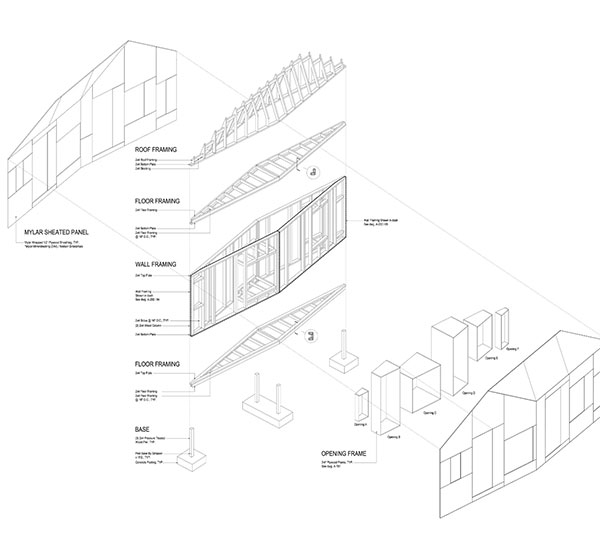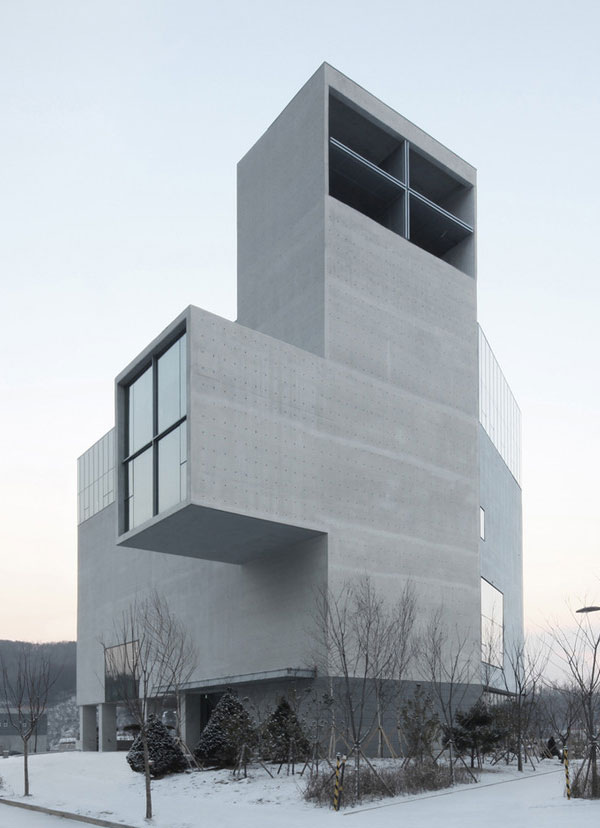
RW Concrete Church is located in Byeollae, a newly developed district near northeast Seoul, Korea. It evokes a feeling, not of a city already completed, but a building on a new landscape somewhere between nature and artificiality, or between creation and extinction. The church, which will be a part of the new urban fabric, is concretized through a flow of consecutive spaces based on simple shape, single physical properties and programs.
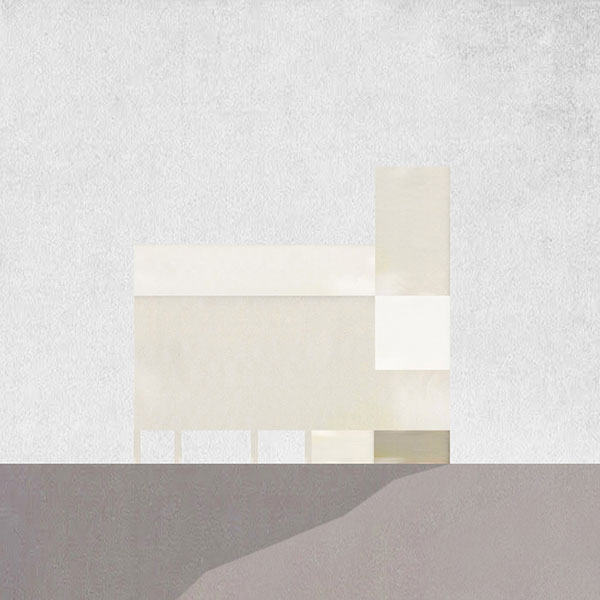
Scheme
The use of simple volumes and a single material adapted to the site collects a range of desires created in the newly developed district. Concrete, which is a structure as well as a basic finishing material for the building, indicates a property that penetrates the entire church, and at the same time, a firm substance that grasps the gravity of the ground it stands on, which is contrary in concept from abstraction. Concrete reveals its solidity as a metaphor for religious values which are not easily changed in an era of unpredictability.
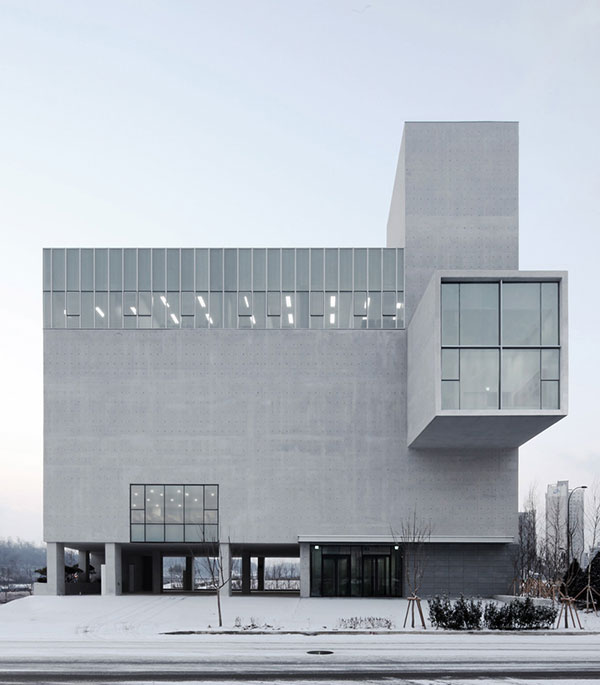
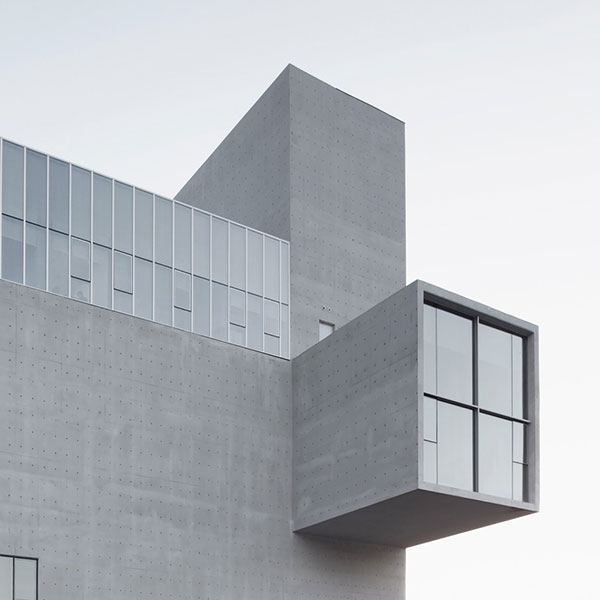
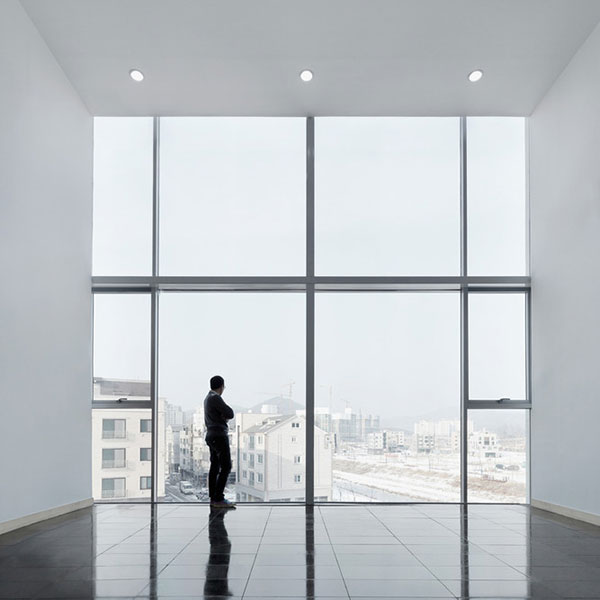
Moreover, the cross as a religious symbol substitutes for an enormous bell tower and is integrated with the physical property of the building through the empty space at the upper part of the staircase. The minimized symbol implies the internal tension of the space.
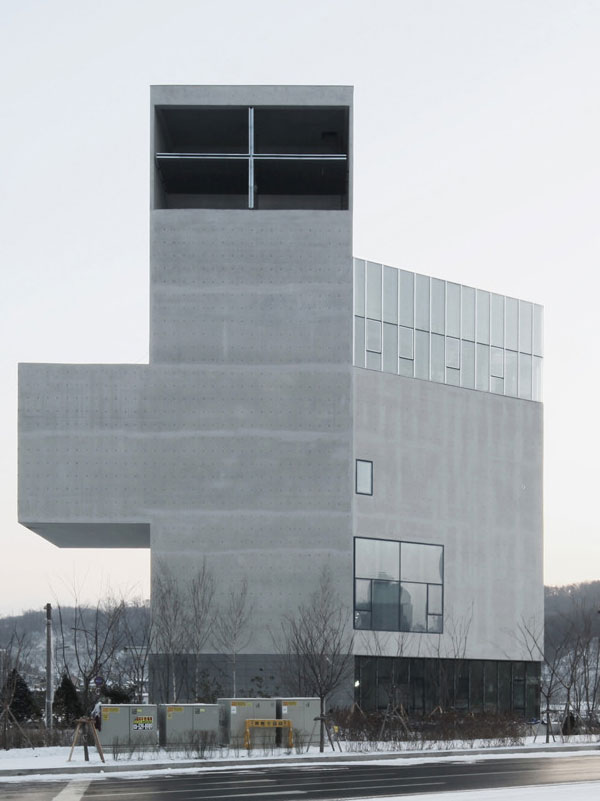
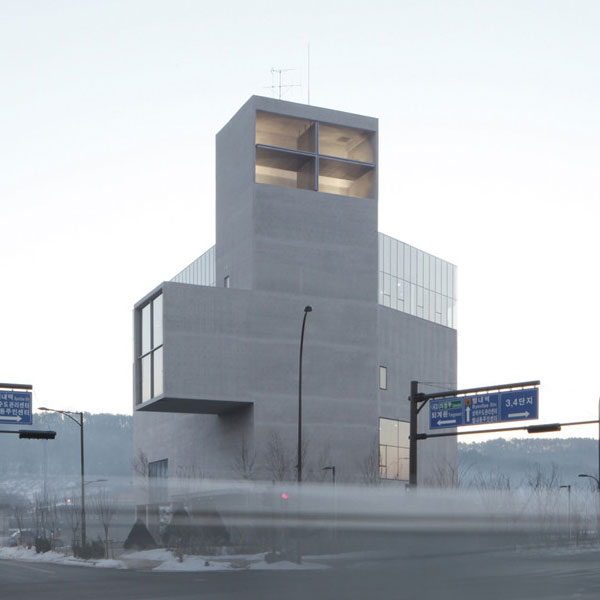
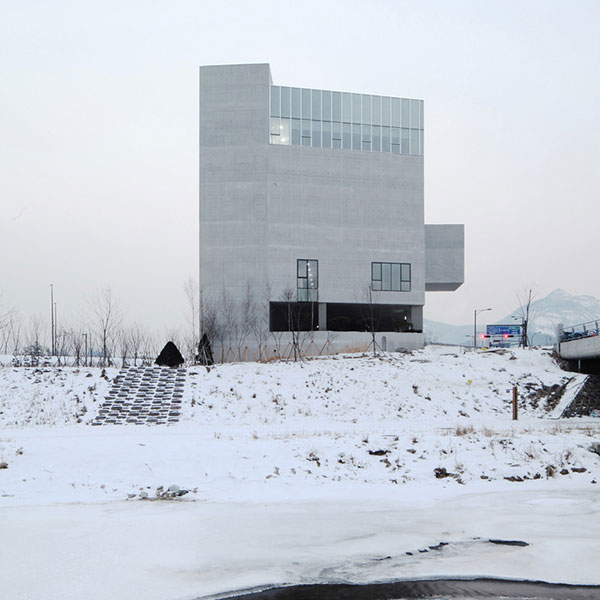
The first thing encountered upon entering the building is the empty concrete yard on the ground floor. This is a flexible space that acts as a venue for interaction with the community while also accommodating varying religious programs. By the time you become accustomed to the dark as you walk past this empty yard, and climb the three stories of closed stairs, you come face to face with a space full of light.
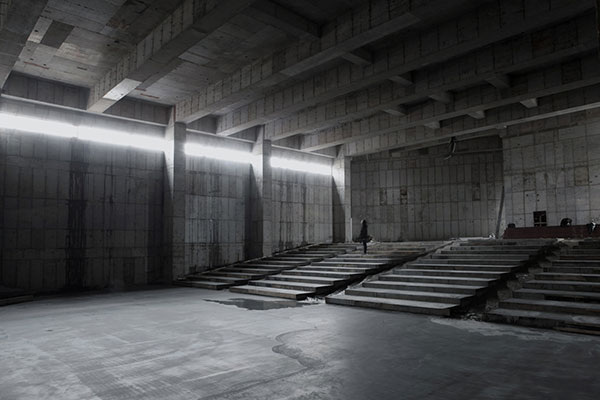
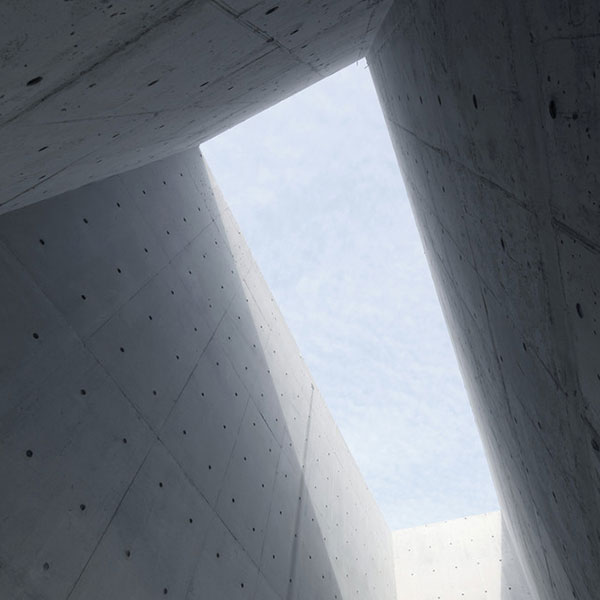
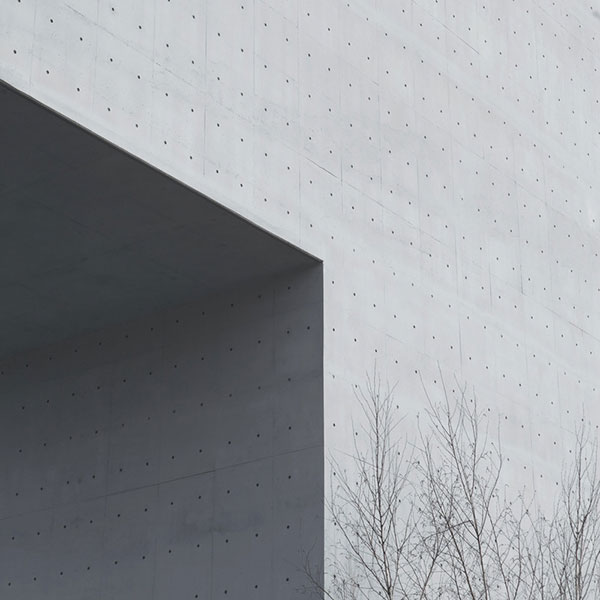
This interior space has a cantilever structure protruding 6.9m, and you must pass through this hall before entering the chapel. This cantilevered space is a physical as well as spiritual transition that connects daily life with religion. The chapel creates a sense of peace with a single space, using a slope that is not so steep, evoking the feeling of attending a worship service on a low hill. The subdued light gleaming through the long and narrow clerestory embraces the entire chapel and lends vigor to the static space.
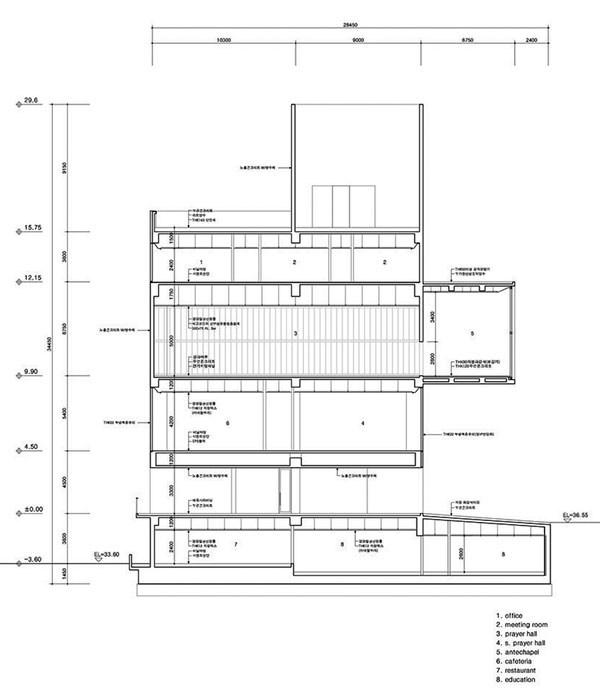
Section
Architects
: NAMELESS Architecture
Location
: Byeollae-myeon, Namyangju-si, Gyeonggi-do, South Korea
Architect in Charge
: Unchung Na, Sorae Yoo
Collaborating Architect
: Jplus (Jungtaek Lim, Hwataek Jung)
Area
: 3095.0 sqm
Project Year
: 2013
Photographs
: Rohspace / NAMELESS
Structural Consultant
: Mido Structural Consultants
Mechanical Consultant
: One Engineering
Client
: RockWon Church
NAMELESS Architecture

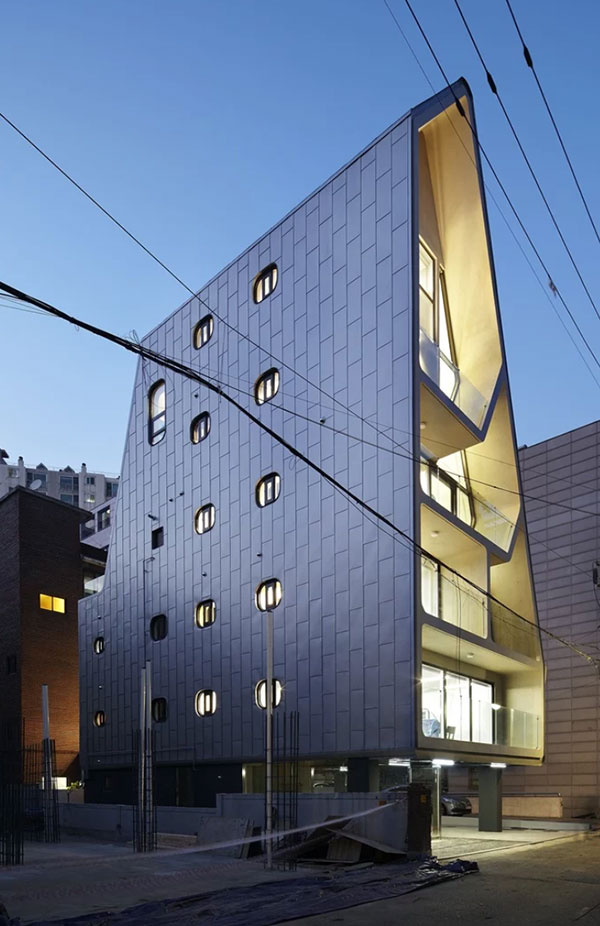
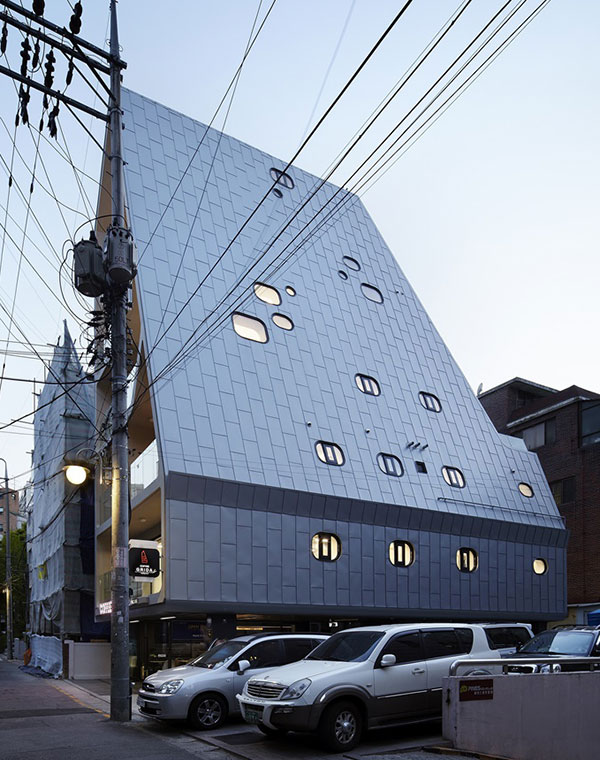
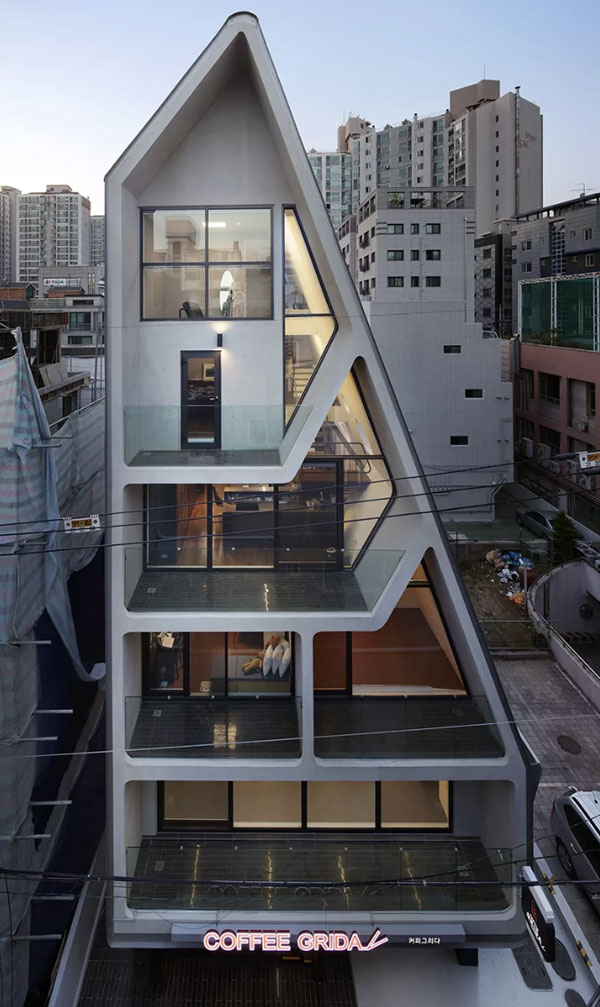
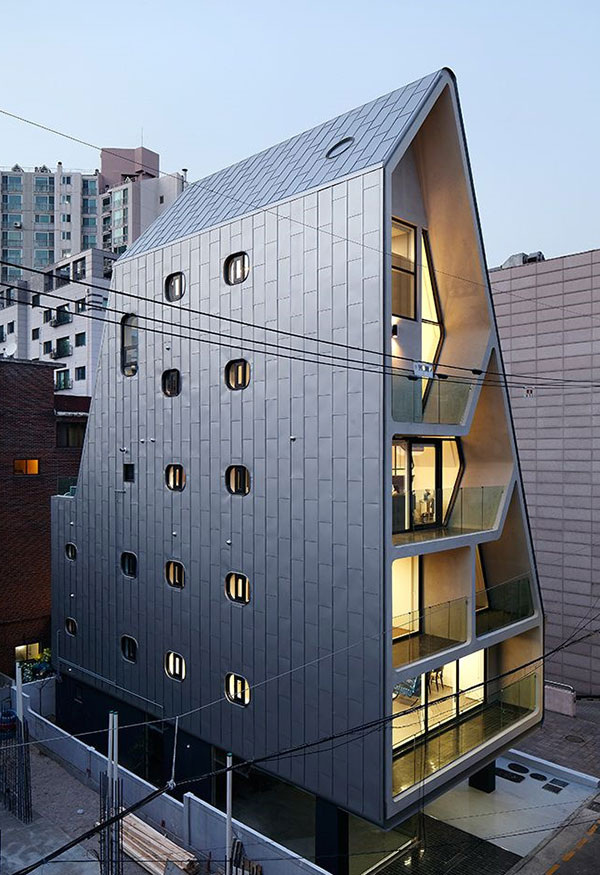
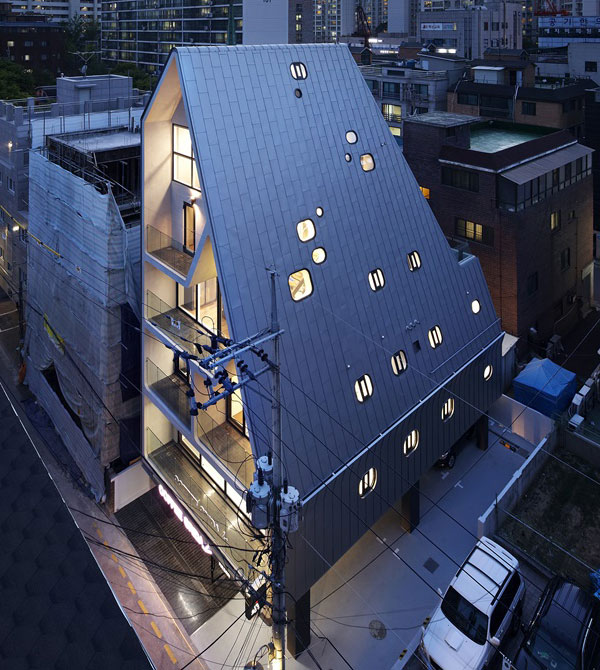
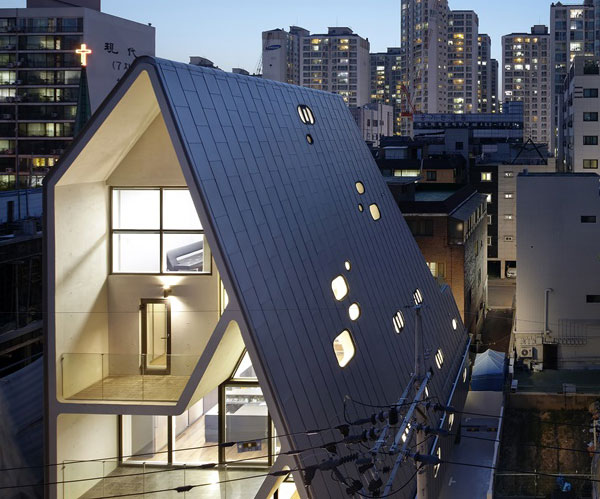
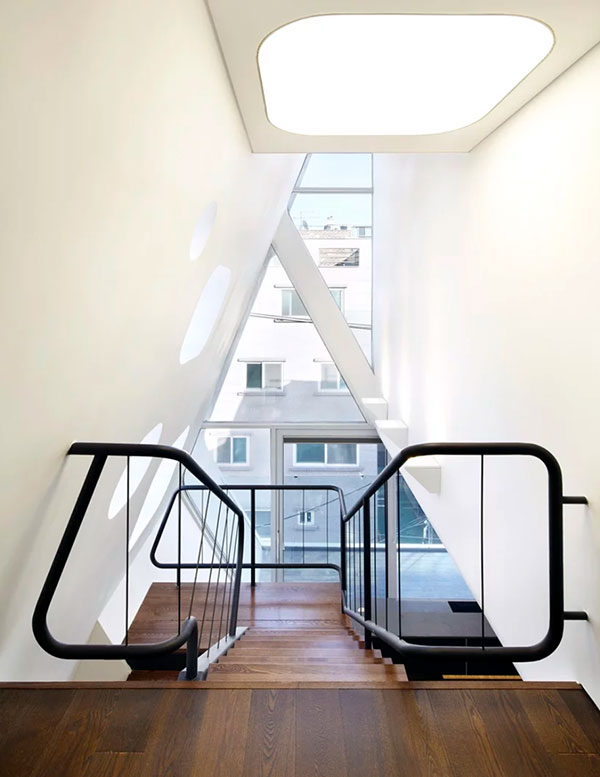
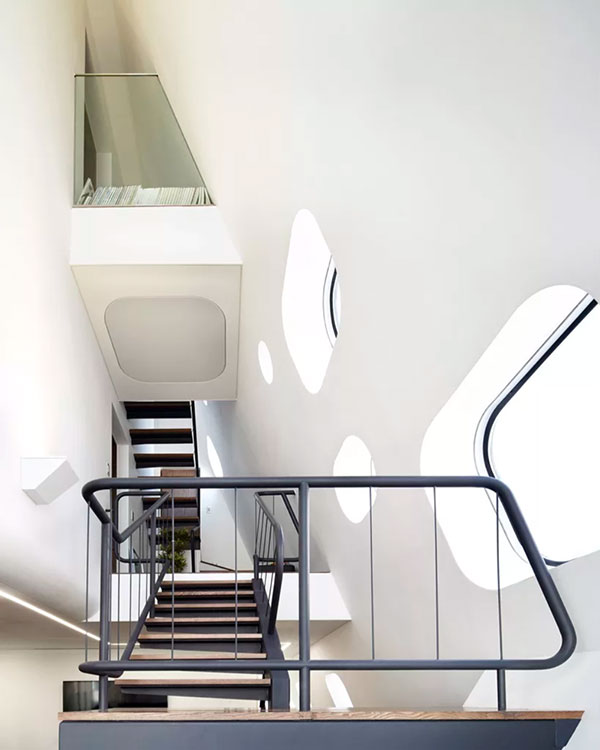
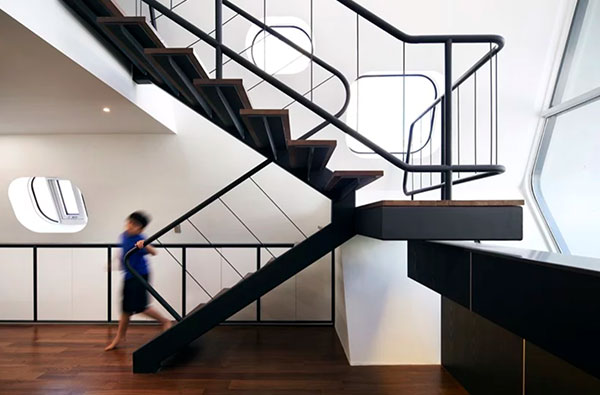
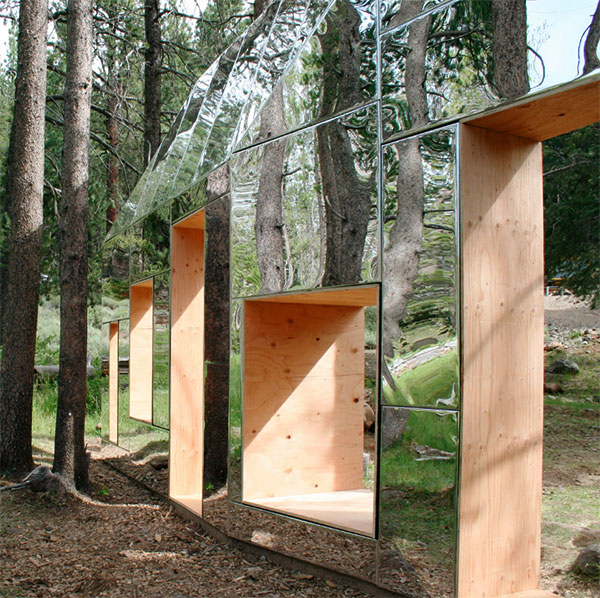
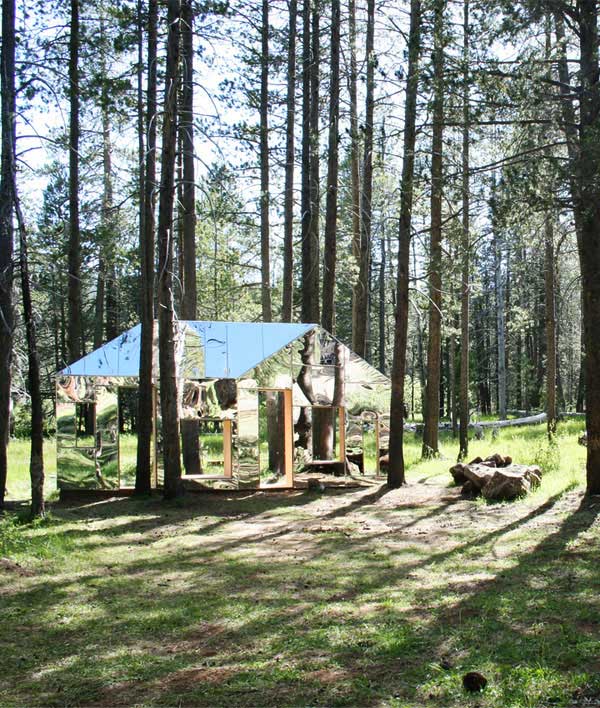
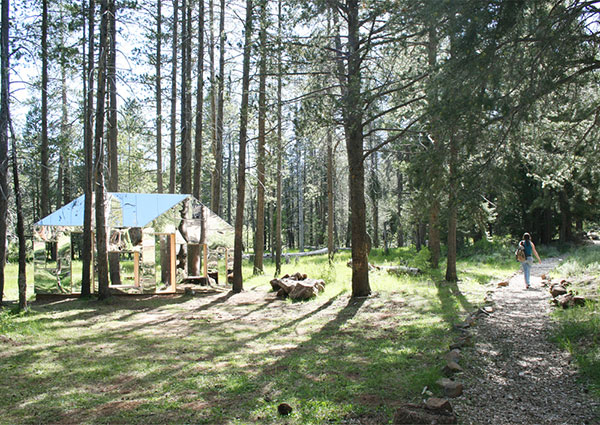
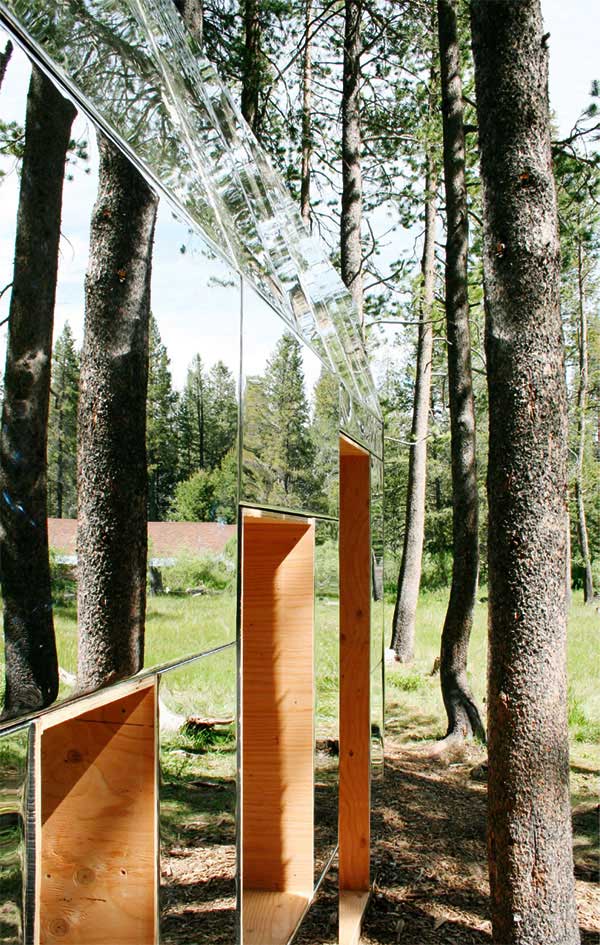
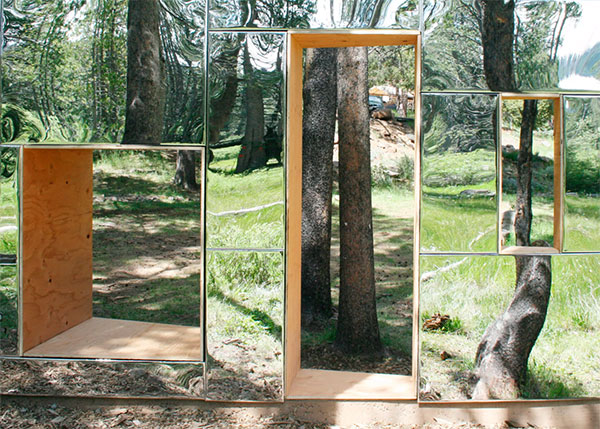
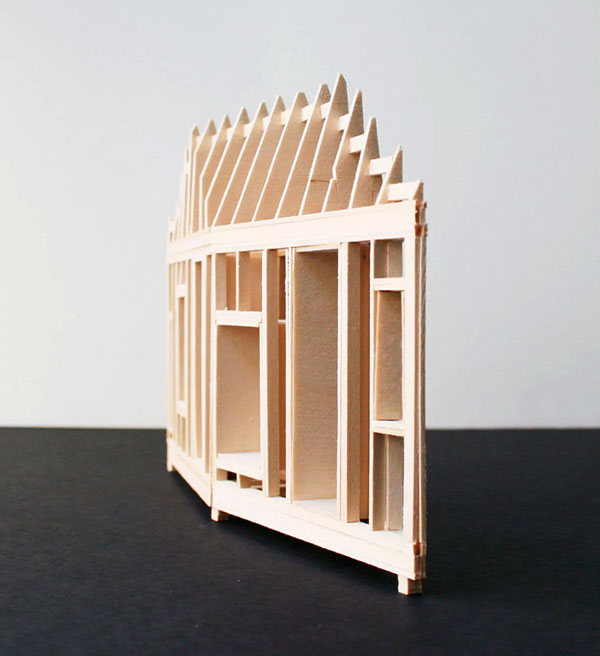
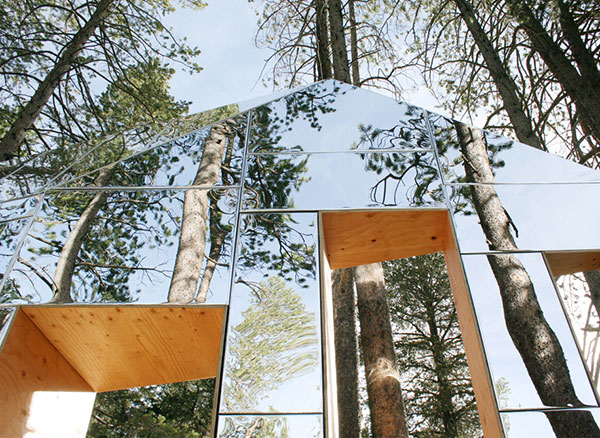
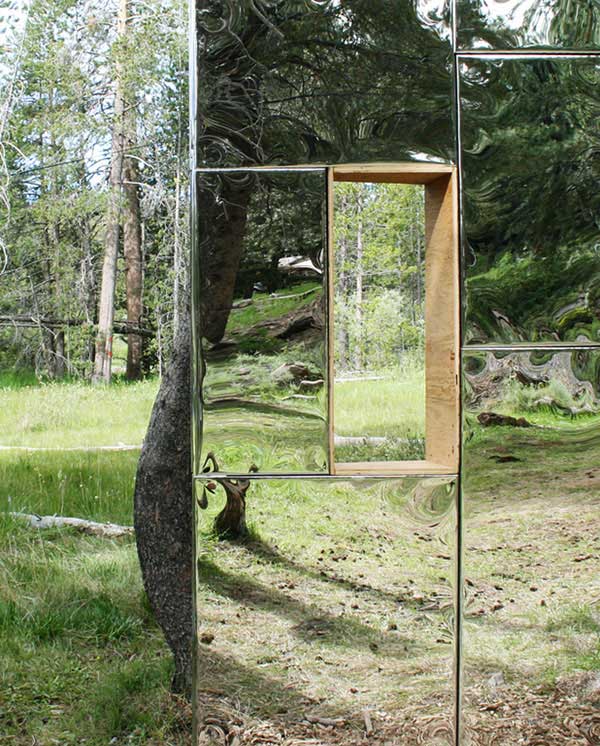
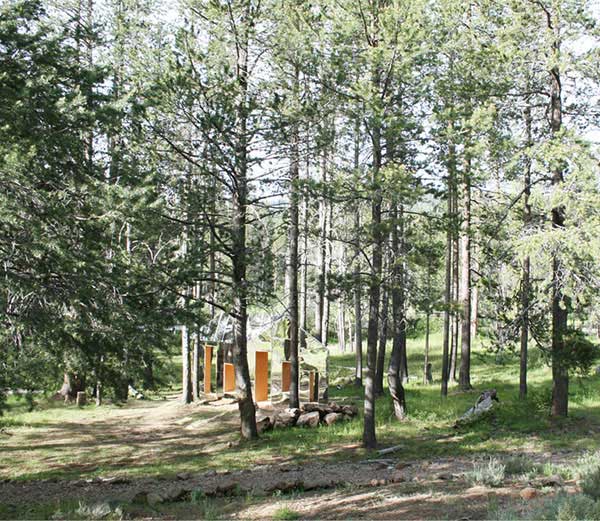
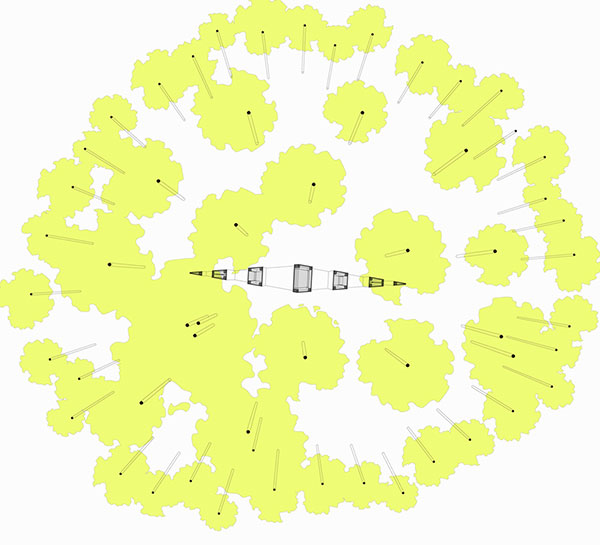 The apertures may suggest viewing frames, passages, and benches and visitors are intended to interact physically and visually with them. In addition the reflective sheathing is aluminized polyester film which has more than 90% of UV reflectivity in the range of 200-400nm wavelength. Though human does not recognize this UV reflection but it is perceivable to birds so that prevents them from colliding onto the structure.
The apertures may suggest viewing frames, passages, and benches and visitors are intended to interact physically and visually with them. In addition the reflective sheathing is aluminized polyester film which has more than 90% of UV reflectivity in the range of 200-400nm wavelength. Though human does not recognize this UV reflection but it is perceivable to birds so that prevents them from colliding onto the structure.
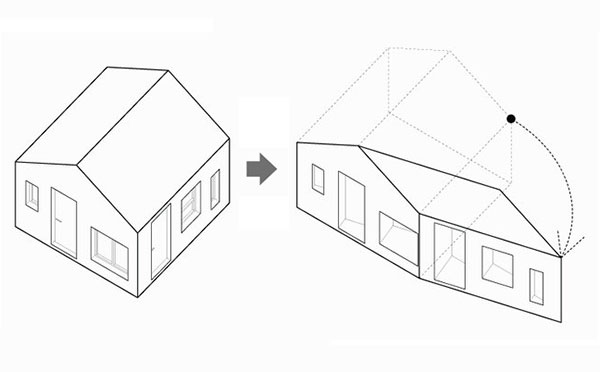 At the intersections between sculpture and architecture, Invisible Barn loses its architectural shape in nature but encourages visitors to interact with it through overlapping in materials and building techniques between the two disciplines. As a static structure, the folly uses its materiality and the site context to draw a new scene derived from the existing landscape. As people begin to move away, toward and within the folly, the users will slowly recognize a space within the grove that reflects, mirrors, and animates the landscape of the park.
At the intersections between sculpture and architecture, Invisible Barn loses its architectural shape in nature but encourages visitors to interact with it through overlapping in materials and building techniques between the two disciplines. As a static structure, the folly uses its materiality and the site context to draw a new scene derived from the existing landscape. As people begin to move away, toward and within the folly, the users will slowly recognize a space within the grove that reflects, mirrors, and animates the landscape of the park.
